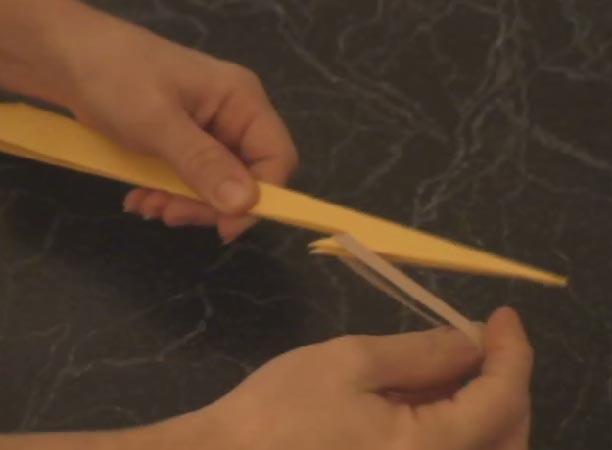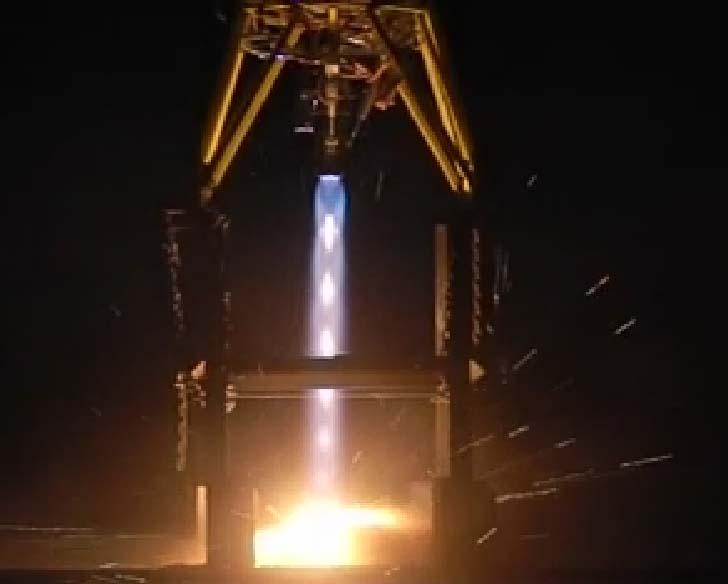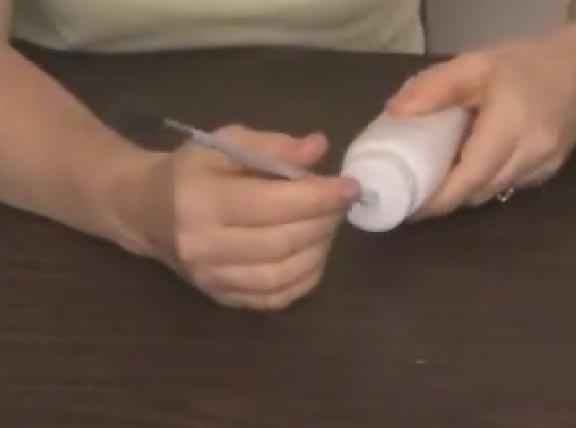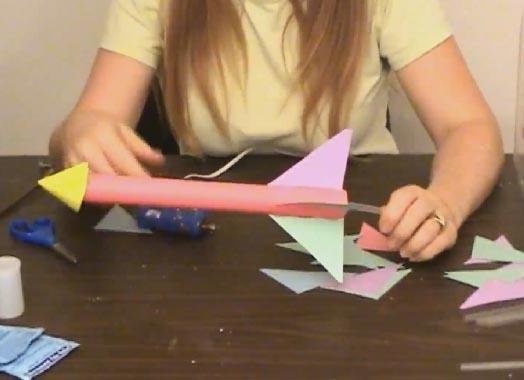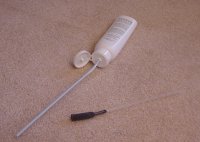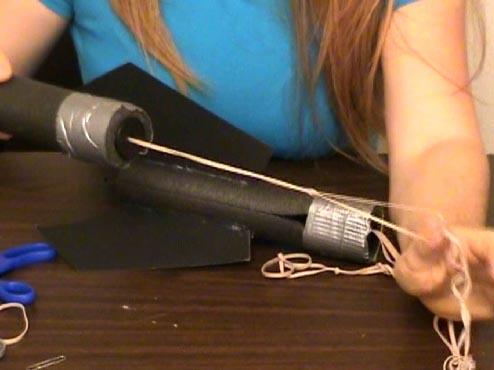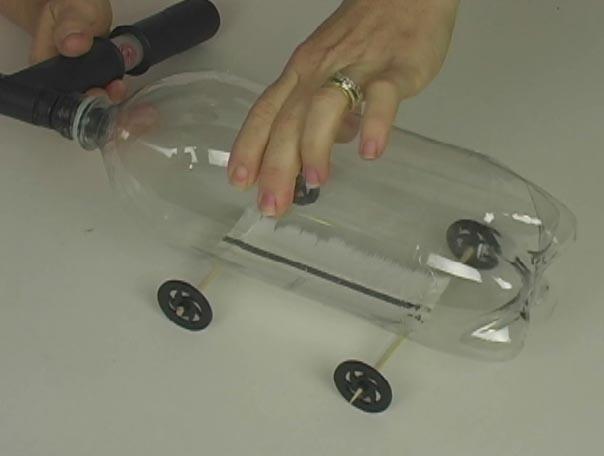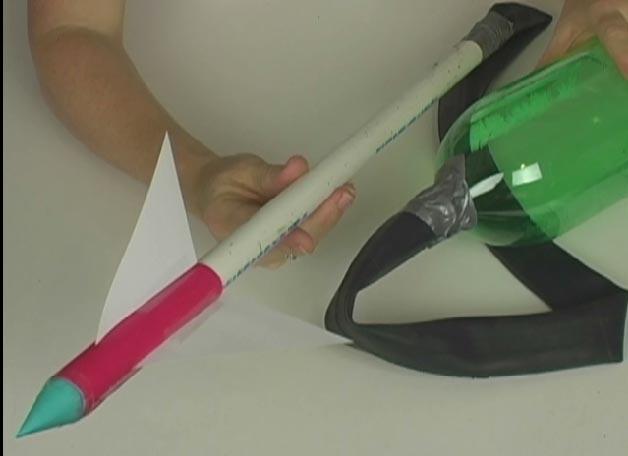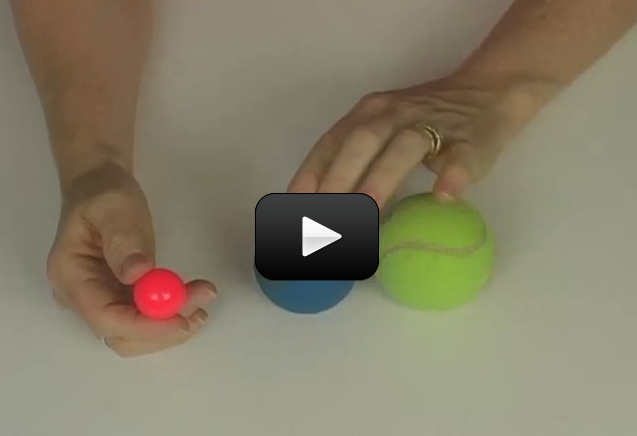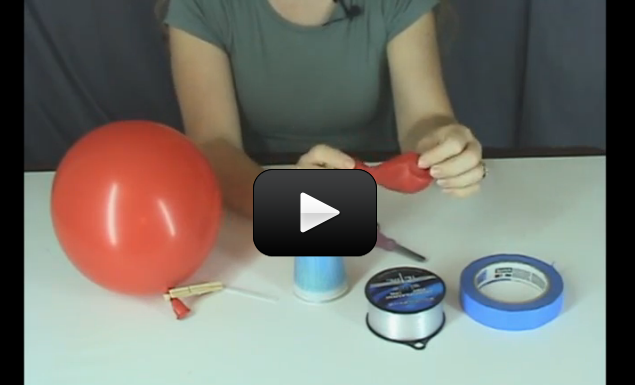Rockets shoot skyward with massive amounts of thrust, produced by chemical reaction or air pressure. Scientists create the thrust force by shoving a lot of gas (either air itself, or the gas left over from the combustion of a propellant) out small exit nozzles.
According to the universal laws of motion, for every action, there is equal and opposite reaction. If flames shoot out of the rocket downwards, the rocket itself will soar upwards. It’s the same thing if you blow up a balloon and let it go—the air inside the balloon goes to the left, and the balloon zips off to the right (at least, initially, until the balloon neck turns into a thrust-vectored nozzle, but don’t be concerned about that just now).
A rocket has a few parts different from an airplane. One of the main differences is the absence of wings. Rockets utilize fins, which help steer the rocket, while airplanes use wings to generate lift. Rocket fins are more like the rudder of an airplane than the wings.
Another difference is the how rockets get their speed. Airplanes generate thrust from a rotating blade, whereas rockets get their movement by squeezing down a high-energy gaseous flow and squeezing it out a tiny exit hole.
If you’ve ever used a garden hose, you already know how to make the water stream out faster by placing your thumb over the end of the hose. You’re decreasing the amount of area the water has to exit the hose, but there’s still the same amount of water flowing out, so the water compensates by increasing its velocity. This is the secret to converging rocket nozzles—squeeze the flow down and out a small exit hole to increase velocity.
There comes a point, however, when you can’t get any more speed out of the gas, no matter how much you squeeze it down. This is called “choking” the flow. When you get to this point, the gas is traveling at the speed of sound (around 700 mph, or Mach 1). Scientists found that if they gradually un-squeeze the flow in this choked state, the flow speed actually continues to increase. This is how we get rockets to move at supersonic speeds or above Mach 1.
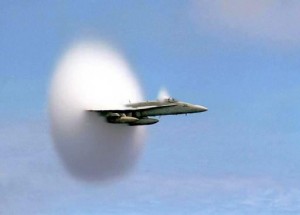 The image shown here is a real picture of an aircraft as it breaks the sound barrier. This aircraft is passing the speed at which sounds travel. The white cloud you see in the photo is related to the shock waves that are forming around the craft as it moves into supersonic speeds. Because the aircraft is moving through air, which is a gas, the gas can compress and results in a shock wave.
The image shown here is a real picture of an aircraft as it breaks the sound barrier. This aircraft is passing the speed at which sounds travel. The white cloud you see in the photo is related to the shock waves that are forming around the craft as it moves into supersonic speeds. Because the aircraft is moving through air, which is a gas, the gas can compress and results in a shock wave.
You can think of a shock wave as big pressure front. In this photo, the pressure is condensing water vapor in the air, hence the cloud. There are lots of things on earth that break the sound barrier – bullets and bullwhips, for example. The loud crack from a whip is the tip zipping faster than the speed of sound.
The rockets we're about to build get their thrust by generating enough pressure and releasing that pressure very quickly. You will generate pressure both by pumping and by chemical reaction, which generates gaseous products. Let's get started!
For this experiment, you will need:
This project is simple, yet highly satisfying. The current record distance traveled is 74 feet... can you beat that? Make sure you launch these UP, not horizontally! You only need three items, all of which are in your house right now! First, you need a piece of...
This project is simple, yet highly satisfying. The current record distance traveled is 74 feet... can you beat that? Make sure you launch these UP, not horizontally! You only need three items, all of which are in your house right now! First, you need a piece of...
Rockets shoot skyward with massive amounts of thrust, produced by chemical reaction or air pressure. Scientists create the thrust force by shoving a lot of gas (either air itself, or the gas left over from the combustion of a propellant) out small exit holes out the back of the nozzles.
Here are two videos of real rockets being tested. The second video uses a special type of photography to see the shock waves (you will learn more about how that's done in Unit 9).
For every action, there is equal and opposite reaction. If flames shoot out of the rocket downwards, the rocket itself will soar upwards. It’s the same thing if you blow up a balloon and let it go—the air inside the balloon goes to the left, and the balloon zips off to the right. They both follow Newton's Third Law: for every action, there is an equal and opposite reaction.
What you're looking at in the video below is exactly the kind of work I did as a graduate student in college when I was 21. The end of a rocket nozzle is on the right side, and you're looking at supersonic air (made visible by a special type of photography called 'Schlieren') as a rushes past from right to left. The thick white lines are shock waves, which are lines where the pressure drop is huge. When the flow is fast enough (around Mach 2 and up), you'll see nicely shaped 'Mach Diamonds' form.
Scientists use these images to tell how well the engines will perform at high-speed flight. One of the greatest aeronautical engineers, Kelly Johnson, who founded Skunkworks at Lockheed, said the greatest compliment he ever received was when a friend commented: "It's amazing... he can actually see airflow." This is what Johnson could visualize in his mind simply because he understood the fundamentals of aerodynamics:
- clean lotion bottle or shampoo bottle
- larger straw that fits onto a smaller straw
- small piece of foam that fits snugly into the straws
- hot glue gun
If you don't have access to an air compressor or air tank with a spray-nozzle, you can either make your own rocket launcher (watch second video below), or make the blow-gun rockets. Either way, you're going to be launching sky-high in no time!
Materials:
- Two straws each in two different sizes
- two sheets
- index cards
- scissors
- tape
- hot glue gun
- air compressor or air tank with spray-nozzle
- metal tubing that fits just inside the larger straws
- sheet of paper
- a straw
- tape
- scissors
You'll see these in toy stores, but why not design your own version? You can add weight to the nose, widen the fins, and lengthen the slingshot part to figure out how to get to to soar further.
Materials:
- foam tube (I used a piece of foam from 3/4" pipe insulation, but you can also use a paper towel tube)
- foam sheet
- film canister or other small container to hold the rubber band in place (or tape the rubber bands to the outside using duct tape)
- paper clip
- 5 to 8 rubber bands
- scissors
- hot glue gun
- duct tape
Newton's Third Law states that all forces come in pairs. When you push against the wall, the wall pushes back against you with an equal amount of force (or push). When a rocket fires, the rocket moves forward as the exhaust gases move in the opposite direction. An inflated balloon will zip through the air as the air escapes. For every action there is an equal and opposite reaction.
If you were to fart in space, what do you think would happen (before it froze)? You would move in the opposite direction!
This rocket car uses high pressure on the inside to blow a weight out the back (the neoprene stopper) and propel itself forward.
This is a faster, easier project than the Linear Accelerator, and builds on the ideas from both Unit 11: Magnetism and Unit 2: Motion (in the momentum section).
Have you ever shot a billiard ball toward another on a pool table and watched the first one stop while the second goes flying? This has to do with a concept known as momentum.
Please login or register to read the rest of this content.
This is a satisfyingly simple activity with surprising results. Take a tennis ball and place it on top of a basketball… then release both at the same time.
Instant ball launcher!
You’ll find the top ball rockets off skyward while the lower ball hit the floor flat (without bouncing much, if at all). Now why is that? It’s easier to explain than you think…
Remember momentum? Momentum can be defined as inertia in motion. Something must be moving to have momentum. Momentum is how hard it is to get something to stop or to change directions. A moving train has a whole lot of momentum. A moving ping pong ball does not. You can easily stop a ping pong ball, even at high speeds. It is difficult, however, to stop a train even at low speeds.
Mathematically, momentum is mass times velocity, or Momentum=mv.
One of the basic laws of the universe is the conservation of momentum. When objects smack into each other, the momentum that both objects have after the collision, is equal to the amount of momentum the objects had before the crash. Once the two balls hit the ground, all the larger ball’s momentum transferred to the smaller ball (plus the smaller ball had its own momentum, too!) and thus the smaller ball goes zooming to the sky.
Materials:
- two balls, one significantly larger than the other
We’re going to experiment with Newton’s Third law by blowing up balloons and letting them rocket, race, and zoom all over the place. When you first blow up a balloon, you’re pressurizing the inside of the balloon by adding more air (from your lungs) into the balloon. Because the balloon is made of stretchy rubber (like a rubber band), the balloon wants to snap back into the smallest shape possible as soon as it gets the chance (which usually happens when the air escapes through the nozzle area). And you know what happens next – the air inside the balloon flows in one direction while the balloon zips off in the other.
Question: why does the balloon race all over the room? The answer is because of something called ‘thrust vectoring’, which means you can change the course of the balloon by angling the nozzle around. Think of the kick you’d feel if you tried to angle around a fire hose operating at full blast. That kick is what propels balloons and fighter aircraft into their aerobatic tricks.
We’re going to perform several experiments here, each time watching what’s happening so you get the feel for the Third Law. You will need to find:
- balloons
- string
- wood skewer
- two straws
- four caps (like the tops of milk jugs, film canisters, or anything else round and plastic about the size of a quarter)
- wooden clothespin
- a piece of stiff cardboard (or four popsicle sticks)
- hot glue gun
First, let’s experiment with the balloon. Here’s what you can do:
Please login or register to read the rest of this content.
Please login or register to read the rest of this content.


